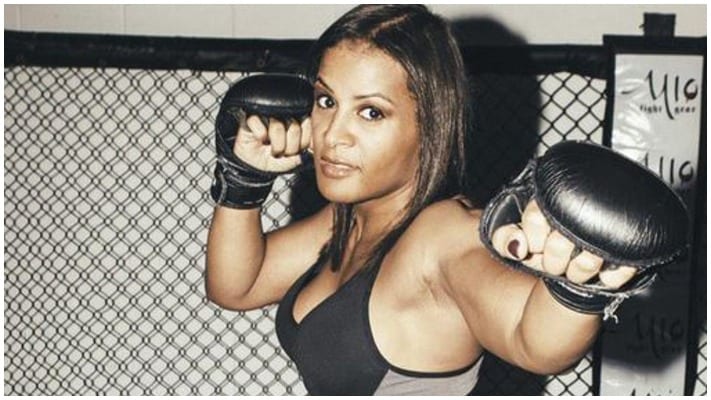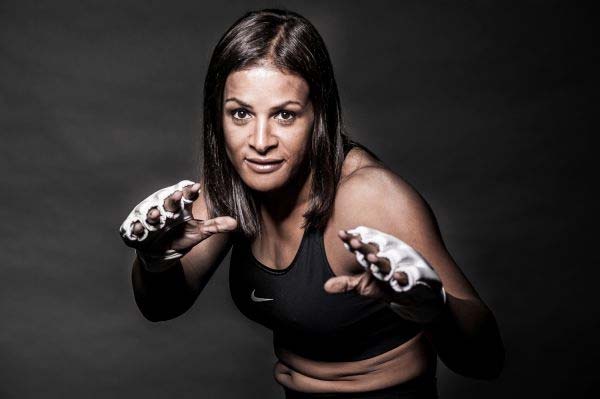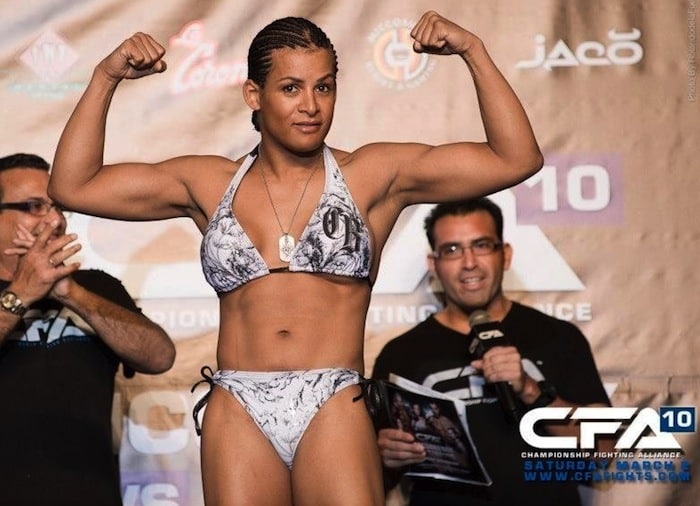The first openly transgender MMA fighter Fallon Fox has been a focal point in the ongoing debate about transgender athletes in competitive sports. She had a brief career in MMA. This is an outline of her story and an outline of transgender athletes in sports. Fallon Fox competed in professional MMA from 2012 to 2014, during which she faced significant backlash after coming out as transgender.
Transgender MMA Fighter
Critics argued that Fox, the transgender MMA Fighter, retained physical advantages from her male puberty despite undergoing gender-affirming hormone therapy and surgery years before competing. Despite fulfilling all medical and regulatory requirements for transgender athletes, including years of hormone therapy and surgical procedures, Fox faced relentless criticism regarding perceived physical advantages.
Fallon Fox
The controversy surrounding Fallon Fox, the transgender MMA Fighter, extended beyond her fights. Prominent figures such as Joe Rogan criticized her involvement in women’s MMA. Fox countered these claims by pointing out that bone density varies widely even among cisgender men and women and argued that such factors are rarely scrutinized outside of discussions about transgender athletes.
“Male to female transsexuals have significantly less muscle strength and bone density, and higher fat mass, than males.” Dr. Eric Vilain – UCLA on Fallon Fox a Transgender MMA Fighter

Fallon Fox breaks skull
Fallon Fox has long been the subject of misinformation surrounding her MMA career, particularly regarding claims that she “broke two skulls” during her fights. This narrative, often repeated by anti-trans advocates, misrepresents the facts of her matches. In reality, the Transgender MMA Fighter Fallon Fox fractured the orbital bone of one opponent, Tamikka Brents, during their 2014 fight, a type of injury that is fairly common in MMA bouts. Despite this distinction, critics have exaggerated the injury as a “fractured skull” to portray Fox as uniquely dangerous due to her transgender status.
Tamikka Brents fought in multiple bouts after this while Fox retired due to injuries. Fallon Fox retired from professional MMA in 2014 due to injuries sustained during her career. Overall, Fox did not have a hugely successful MMA career.
“Fox retired from MMA in 2014 and is disabled with a full knee replacement and osteoarthritis in the other knee. “I couldn’t return to fighting even if I wanted to,” she said.” Reuters


Transgender Olympic Athletes
Transgender athletes have been eligible to compete in the Olympics since 2004 under guidelines set by the International Olympic Committee. These rules required gender reassignment surgery and two years of hormone therapy. Transgender athletes have had limited success on the Olympic stage, just as the Transgender MMA Fighter scarcely had success as well.
Over the past 20 years, the Olympics have welcomed tens of thousands of athletes, yet transgender representation remains minimal. Overall, there are roughly 10,000 athletes per Olympic games. Since allowing transgender athletes in the Olympics in 2004 there have been approximately 110,000 athletes competing, and less than 12 of them were trans. Transgender athletes remain an exceptionally small subset.


The Impact of Hormone Therapy on Performance
Gender-affirming hormone therapy significantly alters physical capabilities. For trans women (male-to-female), testosterone suppression reduces muscle mass, strength, and endurance over time. Studies show that while trans women may retain some advantages initially, such as faster running times or greater upper body strength, these diminish with prolonged hormone therapy, of which Transgender MMA Fighter Fox underwent. After two years of treatment, performance metrics often align more closely with those of cisgender women.
Transgender Athletes
Despite widespread media attention, the number of transgender athletes competing at any level remains extremely small. Fallon Fox is largely the only Transgender MMA Fighter in the sport’s history dating back to 1993. For instance, fewer than ten transgender college athletes were reported among over 500,000 NCAA participants in 2024. Moreover, transgender athletes have not achieved disproportionate success overall. Their impact remains minimal.
While hormone therapy reduces physical advantages over time, according to research, debates persist about whether residual differences create an uneven playing field. Importantly, data shows that transgender athletes are not dominating elite competitions or fundamentally altering outcomes in most sports.
Protecting Women
Protecting women in sports is a critical issue that requires aligning with advocates like Vinesh Phogat, who have courageously stood up against systemic injustices relating to sexual assault. Her protests against sexual harassment within the Wrestling Federation of India exposed the widespread misogyny and abuse faced by female athletes. Phogat began nationwide protests and brought the perpetrators to court. Her case was important to protect women in sports but had nothing to do with trans athletes at all thus it barely made headlines in Western media. Media narratives are more interested in attacking trans athletes, or perceived trans athletes, instead of standing up when women point out that they need help.
One of the most notorious cases is the USA Gymnastics sexual abuse scandal involving Larry Nassar, a former team doctor who abused over 500 women and girls under the guise of medical treatment. Nassar’s crimes spanned decades. Investigations revealed systemic negligence, including the FBI’s mishandling of credible allegations, which allowed Nassar to continue abusing athletes for years. Survivors like Simone Biles, Aly Raisman, and Rachael Denhollander have spoken out.
Protecting women in sports requires addressing these systemic failures rather than focusing on scapegoats like transgender athletes. The overwhelming evidence shows that sexual abuse is facilitated by entrenched power structures.



















